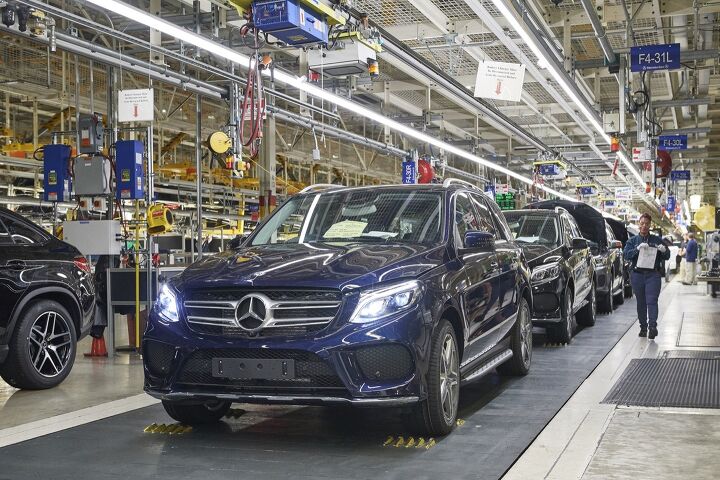Steel, Aluminum Tariffs Might Not Happen, Trump Says

As the U.S., Mexico, and Canada enter into the final day of the seventh round of NAFTA renegotiation talks, President Trump is offering his neighbors an incentive for signing a favorable deal.
“Tariffs on Steel and Aluminum will only come off if new & fair NAFTA agreement is signed,” Trump tweeted on Monday morning.
The president’s surprise announcement of tariffs on imported aluminum and steel late last week — 10 percent on the lighter metal, 25 percent on the heavier one — sent automaker stocks tumbling. Hoping to quell fears of new vehicle price increases, General Motors and Toyota released statements claiming the bulk of their aluminum and steel flies a red, white, and blue flag.
Quick out of the gate, the American International Automobile Dealers Association stated, “Both metals are crucial to the production of cars and trucks sold in America today and would raise the sale prices of those vehicles substantially.”
While the proposed tariffs would be a boon for domestic producers of steel and aluminum, the potential for inflated window stickers comes as auto sales cool off in the United States. Trump later applied the tariff threat to imported European vehicles (in the event the European Union retaliates).
Speaking on CNBC Friday, U.S. Commerce Secretary Wilbur Ross predicted a “trivial” price impact on vehicles, given that steel goes for $700 a ton. Ross’s desire for tariffs apparently won out over the president’s chief economic advisor, Gary Cohn, who opposed the creation of tariffs.
According to Ducker Worldwide-FSG, the average U.S. vehicle is 11 percent aluminum and 54 percent steel. Factoring in metal waste during the production of parts, the research firm estimates an average vehicle (weighing 3,835 pounds) uses 526 pounds of aluminum and 2,925 pounds of steel. Analysts suggest a tariff could add $200 to $300 to the price of a new vehicle.
So far, Ford, Honda, and Toyota have issued statements warning of negative tariff consequences.

More by Steph Willems
Latest Car Reviews
Read moreLatest Product Reviews
Read moreRecent Comments
- Yuda Agreed Now if only people had enough sense to tell that the EV mandate is also hideous overreach that would be nice too
- Henry Completely agree with the unacceptable false alerts. And in addition to that, it's just one more thing that adds cost to new cars. We're all forced to pay for government mandates, whether we want them or not. For example, too many people were too lazy to check their tire pressure, so now we all have to pay for TPMS. ADAS features all cost a bundle and it's no wonder that new cars are so costly.
- Jalop1991 It would be easy to draw a direct correlation between any changes in EV demand and the sudden uptick in new or near-new Tesla vehicles which have been stored at the soon-to-be-demolished Chesterfield Mall.You misspelled "accurate".
- Jalop1991 the Honda eeny? WTF?Drugs are bad, mmmmkay?
- ToolGuy These would have sold better with a more prominent grille design.Source: BMW


































Comments
Join the conversation
YAWN. Another day, another political click bait article from an automotive website. Hey everyone, did you know Black Panther is the BEST FILM OF ALL TIME???!!!!
This is why countries and their leaders are getting sick of Trump. Have read. http://www.abc.net.au/news/2018-03-05/trump-said-australia-would-be-exempt-from-tariffs/9512612